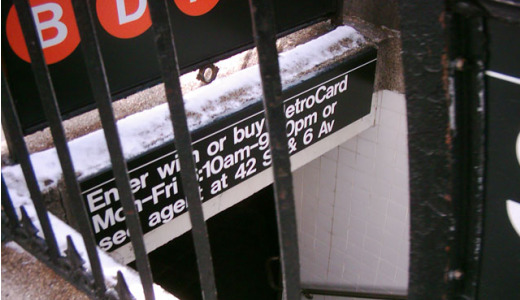
NEW YORK – In a pre-spring offensive against 38,000 transit workers and a riding public of millions, Jay Walder, chair of the Metropolitan Transportation Authority, which runs the city’s subways, buses and commuter rail, has announced 1,000 layoffs. He vowed “an aggressive overhaul of MTA operations.” Workers likely to be axed by Walder include 450 station agents. The MTA also targeted school children, who for generations have gotten subsidized transit bus passes.
Two days later, transit workers, teachers, riders, communities and their allies fired the first shot in the counteroffensive – on the issue of student Metrocards. Transport Workers Local 100 President John Samuelsen joined Michael Mulgrew, president of the United Federation of Teachers, in denouncing the government’s “upside down” priorities – where Wall Street bankers are given bailouts that turn into bonuses and school children are told they can’t have passes to ride to school.
Samuelsen declared, “Along with our jobs, student Metrocards are in the MTA’s crosshairs. If the cards were discontinued, public education in New York City would cease to be free, devastating hundreds of thousands of families with extra costs of as much as $2,600 per year. Defending student Metrocards is part of our multi-pronged fight against cuts in mass transit.”
Recession is not the only cause of the MTA deficit. No layer of New York State’s government has acted responsibly on MTA finances. In 1994-1995 Mayor Giuliani and Gov. Pataki, obsessed with cutting taxes for the rich and services for working people, slashed subsidies to the MTA. To fill the gap, the MTA went to Wall Street and borrowed billions at high interest rates. The bills have come due. The MTA must allocate a huge part of its current operating revenue to service its debt. This puts pressure on other big components of the operating budget: service levels and workers’ wages and benefits. Also, with a severe recession, the taxes that help finance the MTA – besides the farebox – are underperforming. Finally, the bailout of the MTA last spring by the state government – paid for by a modest payroll tax – has come partly unraveled. Legislators and finance officials in the outer counties of the MTA region are fighting the new payroll tax.
The way the MTA aims to solve the crisis deserves to be called class war, with winners and losers. The main winner is Wall Street, which gets billions from the swollen debt-service. Next, real estate and construction moguls who feed off a $5 billion a year MTA capital (construction and repair) budget. Losers? The workers won’t get the wages and benefits they are legally and morally entitled to. Riders, mostly working people, will lose in service cuts and higher fares. The MTA financing system will grow more regressive. Already, it is one of the most farebox-dependent in the country.
The mass transit crisis is a national crisis. Transit labor is under siege in cities across the country. State and national governments need to be pushed. In New York State, some are calling for a greater tax on the rich, and an expansion of the Fair Share Tax reform that was passed about a year ago. Unfortunately, Gov. David Paterson is in favor of allowing the whole law to sunset.
Emergency funding for operating subsidies also has to come from the federal government. Leaders from the Amalgamated Transit Union, TWU, the International Association of Machinists and the Service Employees International Union are putting together a political strategy. Sen. Kirsten Gillibrand, D-N.Y., is already arguing for the more generous use of stimulus money and “jobs bill” money to keep transit systems afloat. The MTA, reflecting big banking, construction, real estate and engineering interests, will oppose any federal aid that doesn’t go to those interests.
It’s class war in transit. The skirmishing has begun.












Comments